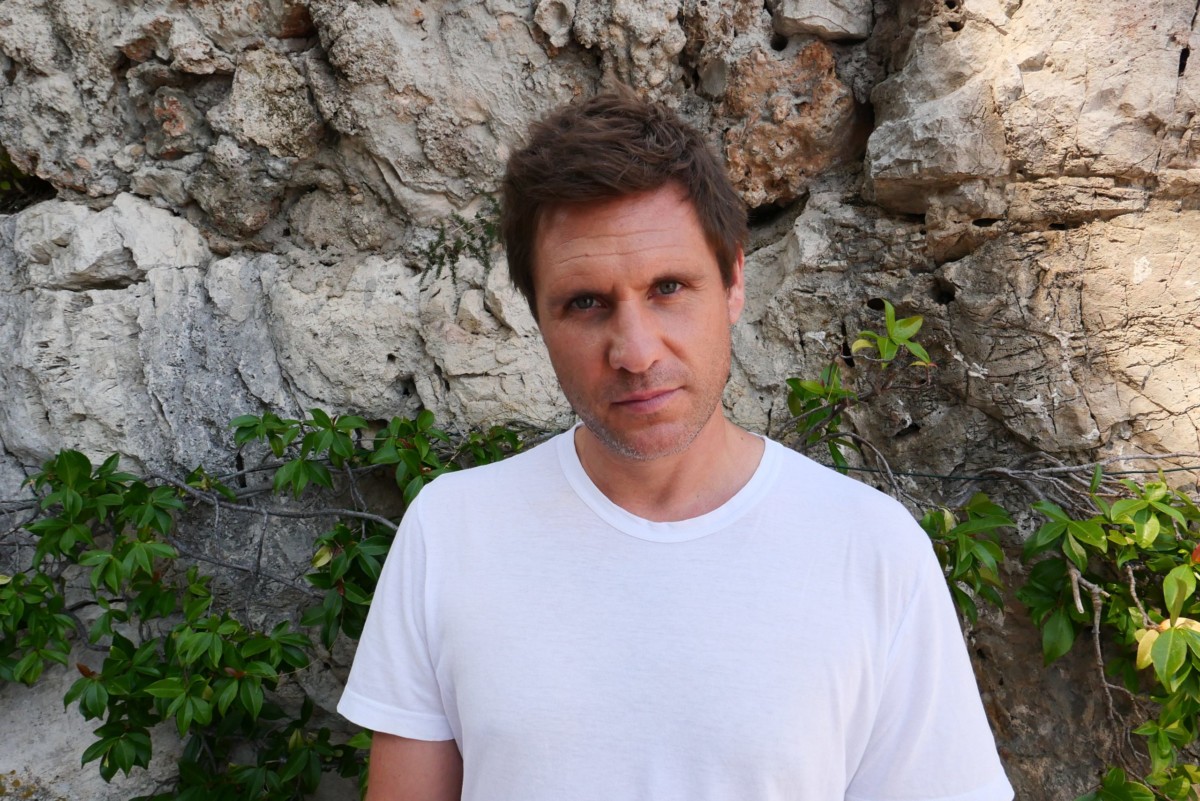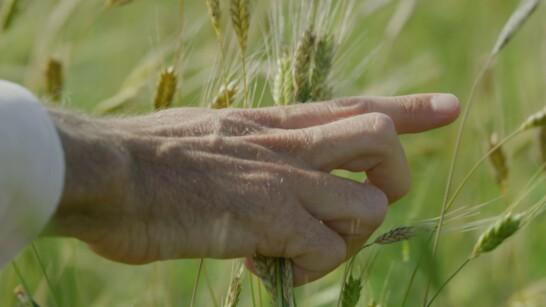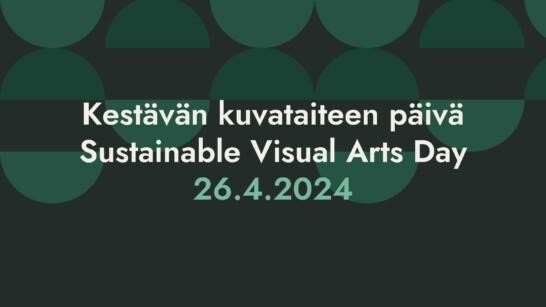News
Ocean Space, Venice – at the heart of the climate crisis in Europe

This interview with Markus Reymann, Director of TBA21–Academy and its physical venue Ocean Space in Venice, took place in June 2020. It is part of a series of interviews that artist Jana Winderen and Executive Director and curator Paula Toppila are making as part of the research for Jana’s IHME Helsinki Commission 2020, now postponed until 2021 due to the COVID-19 pandemic.
Ocean Space is an important art institution, both from Jana Winderen’s viewpoint. Jana has been collaborating with Thyssen-Bornemisza Art Contemporary’s TBA21–Academy on her artistic research for the last ten years. IHME and Ocean Space have some similar ambitions: to share with a variety of audiences a single annual production that gives the artist a chance to carry out 2-3 years of research. Like IHME, Ocean Space is also in the process of developing ecologically sustainable practices, and is planning to make major changes to the ways they fulfil their mission as a contemporary art institution focusing on exploring the ocean realm.
Why art and science and research?
Markus Reymann (MR): The main programme of Ocean Space is an exhibition based on a long-term research commission, which we display for one year. We unfold the topics and themes in an on-going public programme, which has different levels. Over the course of three years, we encourage dialogue and collaboration between artists and scientists, but also policymakers, legal representatives, educators, practitioners of indigenous knowledge and leadership, and traditional ways of being with the ocean. Also, for the audience and the communities that come and visit us, these projects are coming not only from the poetic, speculative space of artistic imagination and research, but also from an institutional practice rooted in the other spheres already mentioned.
Many of the artists’ work, for example, Jana’s work in Thailand , is strongly rooted in the local context and in injustices happening there. Jana’s work is not immediately activist, but if you spend more time with it you will become aware of those connections. You can make the connection between the beauty and the sensitivity of what you hear and the precarious situation where that beauty exists.
Paula Toppila (PT): Could you say more about the very beginning of this direction of focusing on collaboration between artists, scientists and researchers from different fields? Why did that happen?
MR: When we started to use the 39-metre expedition vessel Dardanella in 2011, we immediately thought about the collaborative teams that would come on these voyages together. At the time, it was a project of artistic research, challenging the way TBA21 had been active. TBA21 had an exhibition space in Vienna with 3-4 exhibitions a year that grew out of the idea of the collection. The question was: Can we commit to long-term collaboration and in an immersive experience? What happens if we fully immerse ourselves? Is there a transformative moment? And how do we engage with and nourish that transformative moment? In order to achieve this, we needed immersion in the latest scientific knowledge as well.
To give an example, we played some of the recordings by Jana at The Woods Hole Oceanographic Institute on the West Coast of the US to four leading researchers there and witnessed how they were absolutely blown away by it. One reason was because we have an ambisonic speaker system on the Dardanella, and second because of the care with which Jana records. The fact that there is someone that is recording the coral reef and its inhabitants as if it were a choir, taking the reef and its inhabitants so seriously that they become collaborators in sound, in performance. It is not only about aesthetics. This is the potential of these relationships. Through the understanding of one, another is enhanced, and then there is a whole new conversation.
Focus on Venice as natural environment
PT: You put it in a very nice way, the connection between people from different disciplines, how it happens through the artist’s work, through Jana’s specific way of practising care, and the way of recording and the use of material she has recorded compared to the scientific use of it. But Ocean Space is also a physical space in Venice, Italy, in the old church of San Lorenzo, which you are renovating… Or how would you put it, is it actually renovating?
MR: I would say that we have consolidated it. It is not really restoration (which all the Venetian restorers are sad about), but instead, it is a similar conversation as with encounters between artists and scientists: What can it become with new inhabitants and a new function in Venice? It was more important to close off the ceiling and the floor so that people could come in and visit the work than to restore it to its old magnificence.
PT: This approach makes me curious to know if you have studied the building as an ecosystem? Do you know which other species inhabit the building?
MR: It is so interesting that you ask about this. The New Institute in Amsterdam is looking for new ways of being together and they have come up with the concept of the Zoap. This is a multi-species co-operative that lives together. So, we are looking into the possibility of turning Ocean Space into a zoap. In order to do this, we have to have a consensus with those who are around. We clearly know about the doves that are all over Venice. There are many spiders that artist Tomas Saraceno has found, and we know about the fish.
PT: This sounds very exciting indeed, we look forward to following up the constitution of the zoap at Ocean Space. I would like to continue my question about Venice, since it is indeed both a very vulnerable natural environment with its lagoons, but at the same time a centre for gigantic mass-tourism. What is the position of Ocean Space in this set-up?
MR: I think that Ocean Space – an institution that claims to want to engage with the topic of climate change – really has to engage and not produce mere cultural commentary. My question is: How can this space become a portal that provides information and inspiration as an ideal laboratory of the future in the heart of the environmental crisis in Europe. There are only a few other places in the world that are so iconic and so visibly threatened. This is something we need to trigger. It is less about the city and more about the environment. I think the question for culture and artistic practices that intervene in different arenas is: Can we become a conduit for all the agents in the city and be part of the change in this set-up?
Walking the talk towards sustainability
PT: What is your contribution to the change that the climate crisis and biodiversity loss are calling for humanity urgently to implement, on a very practical level? To give an example, in Helsinki we are in discussion with some other art institutions, actively making change by selecting renewable energy when possible, producing less, collaborating more with local communities, travelling less or travelling by land, aiming to negotiate more or less every aspect of our activities from the perspective of sustainability.
MR: Yes, we are developing protocols for zero waste, and exploring how to change the programme so that there is less travelling. The actual space of Ocean Space, for example, has no climate control. The lagoon as an ecosystem has salt marshes that have, next to mangrove, sea grass and peat bogs, the highest carbon sequestration potential, but they are constantly under threat. My question is whether we can create a situation where the space actively protects the salt marshes, and maybe has a plot for salt marsh restoration and, with that, carbon sequestration potential, in an effort to become carbon neutral – actually to have a certificate. How can we, the ecosystem and Ocean Space, organisationally really embrace each other?
Another thing is that we are cancelling voyages on the boat, the Dardanella, which has always been very carbon hungry. With all the funding we save in not travelling to and from the boat, we want to run programming on-site, to facilitate the creation of programmes by people from the region for the region, and at some point to bring it back to Ocean Space. We are looking at three nodes: Venice and the Mediterranean, Jamaica and the Caribbean, and Fiji and the Pacific. The questions are: How can we communicate between these three nodes, and whether we will occasionally still bring people to Ocean Space. And as we know, due to the pandemic, we are all experts in video conferencing now.
Working with local communities
PT: And so much can be done remotely, too. Working locally in those three nodes sounds particularly good. Because of the aspect of being rooted in the local context and community, those projects may have a life afterwards, too. As we know the climate crisis is linked to the pandemic, and the COVID-19 virus has brought many of our operations to a halt and, at the same time, given us a lesson in how we should change our priorities in life and work. How has the pandemic affected your thinking as an organisation?
MR: We started to think about our responsibility to the local community and about how important it is to continue programming. We are organising walks in Venice, for a maximum of 25 people. There are seven walks and seven trajectories (corresponding to the seven trajectories of our latest long-term commission Oceans in Transformation), with experts who are connected to the city, to the ecosystem there, and to the exhibition that cannot be there now. We are also asking ourselves what is our responsibility as a cultural institution when we have a space – can it become a broadcasting station, or a facility, for manufacturing personal protective gear, or a field-bed station for care personnel, as the senior-citizen centre is next door?
JW: Arranging walks sounds good, as it responds to the security measures introduced due to the pandemic, and still allows a possibility for people to gather and share. When I was working with Art Miami, I asked the organisers to pay for cleaning, instead of installing a carpet in the exhibition space. And they were immediately willing to do that. I think people want to do things differently, but they don’t know how and there is no time to think about it. Questions like: Where does the electricity come from? are very seldom asked in an art institution.
PT: Yes, and that is why we need to study more about ecological, economic and social sustainability, the interconnectedness of everything, no matter which profession we represent. I hope that understanding of sustainability will in the future be part of our civics, that everyone can contribute to climate work no matter what their professional field is.
JW: What I have appreciated a lot in my collaboration with TBA21–Academy is the long-term thinking, and that we have developed projects together over many years. It is rare that you have this opportunity. And also, of course, the possibility to go to places and particular sites that otherwise would have been very difficult to go to, and that the project has also decided where we have been and which local people and scientists we have met, talked to, and learned from. It’s been excellent for the Silencing of the Reefs project, and also for the commissions I have done with you, such as bára, for example.
MR: There is something to say about your practice: the way you engage with the work in the presence of scientists. Scientists are so sceptical about everything that is not science. You need to train for years and years and qualify yourself with peer-reviewed articles. When they meet someone like you, that is so deep in the conversation and their practice, they are so serious. It is about dedication to the practice, to the ecosystem, and to time – not just the product. That is the difference. It is a continuous search for a new language that is developed in the process.


